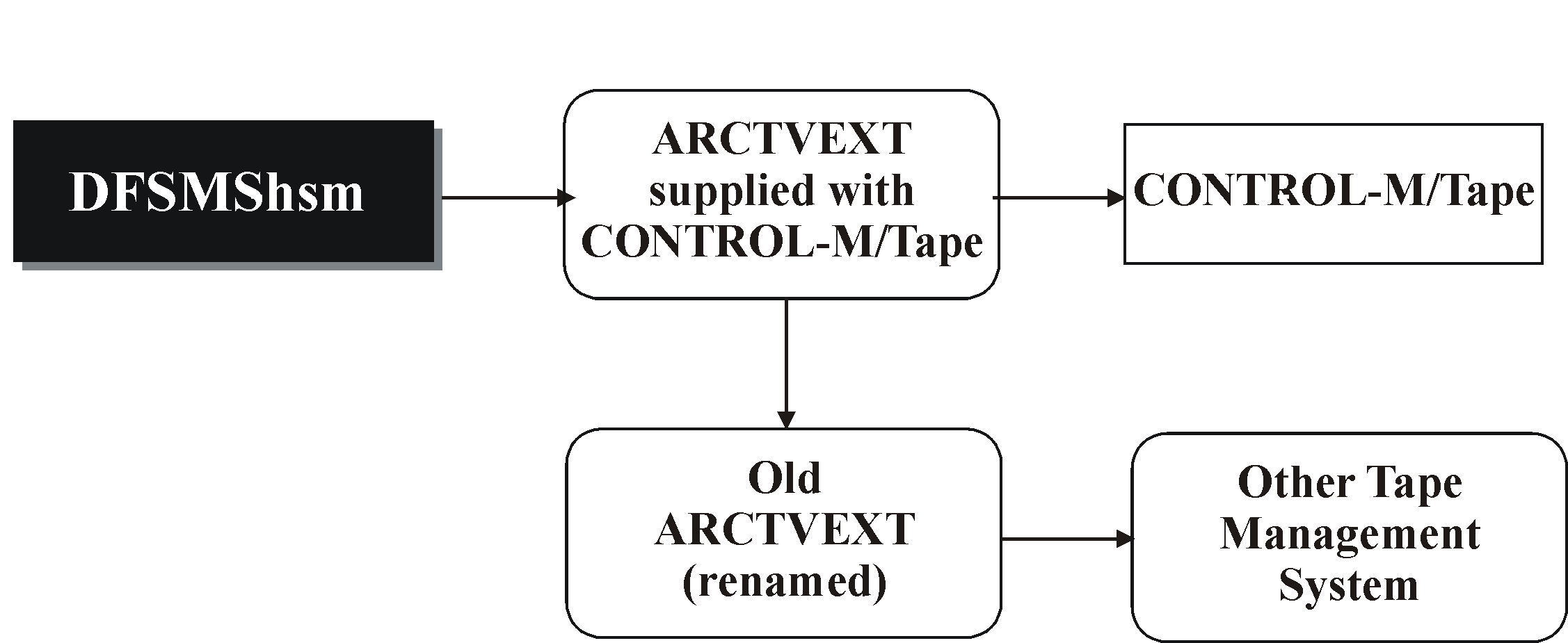The Control-M/Tape interfaces for DFSMShsm and ADSM (ADSTAR Distributed Storage Manager) are identical. The same members and steps are used for both of these EDMs. However, for easier reading, the steps shown below mention only DFSMShsm.
The ARCTVEXT member in the IOA SAMPEXIT library is called by DFSMShsm whenever a tape volume no longer contains valid data. The exit marks the volume as scratch in the Media Database and, optionally, interfaces with an automated tape library at the site.
Figure 35 DFSMShsm Calling the ARCTVEXT Member

Use the following steps to implement the Control-M/Tape to DFSMShsm interface:
If this exit is already in use at your site (meaning, by another tape management system), use the following steps to integrate your current ARCTVEXT exit with Control-M/Tape’s exit in Global Test and Global Phased modes. You should stop using your other product’s ARCTVEXT exit when you first activate Control-M/Tape in Global Production mode.
The EDM now calls the ARCTVEXT exit supplied with Control-M/Tape that in turn calls the old ARCTVEXT (that has been renamed).
Figure 36 DFSMShsm Calling the ARCTVEXT Member Supplied with Control-M/Tape

DFSMShsm receives a return code from the exit that communicates with the old tape management system. (This exit was originally named ARCTVEXT.)
ON DATASET = * AND
ON PGM = ARCCTL
DO RETENTION = EDM
Note: ADSM invokes deletion Exit ARCTVEXT when it releases a tape. This exit, which is invoked in the ADSM address space, is identical to the ARCTVEXT exit used by DFSMShsm.
To disable the old ARCTVEXT exit and replace it with the new ARCTVEXT exit, issue the following commands in this order:
SETSYS EXITOFF(ARCTVEXT)SETSYS EXITON(ARCTVEXT)
You can use the CTTSYNC utility to list all inconsistencies between the Media database and the DFSMShsm OCDS file. You can run this utility occasionally, just to ensure that the two databases are synchronized.
Parent Topic |